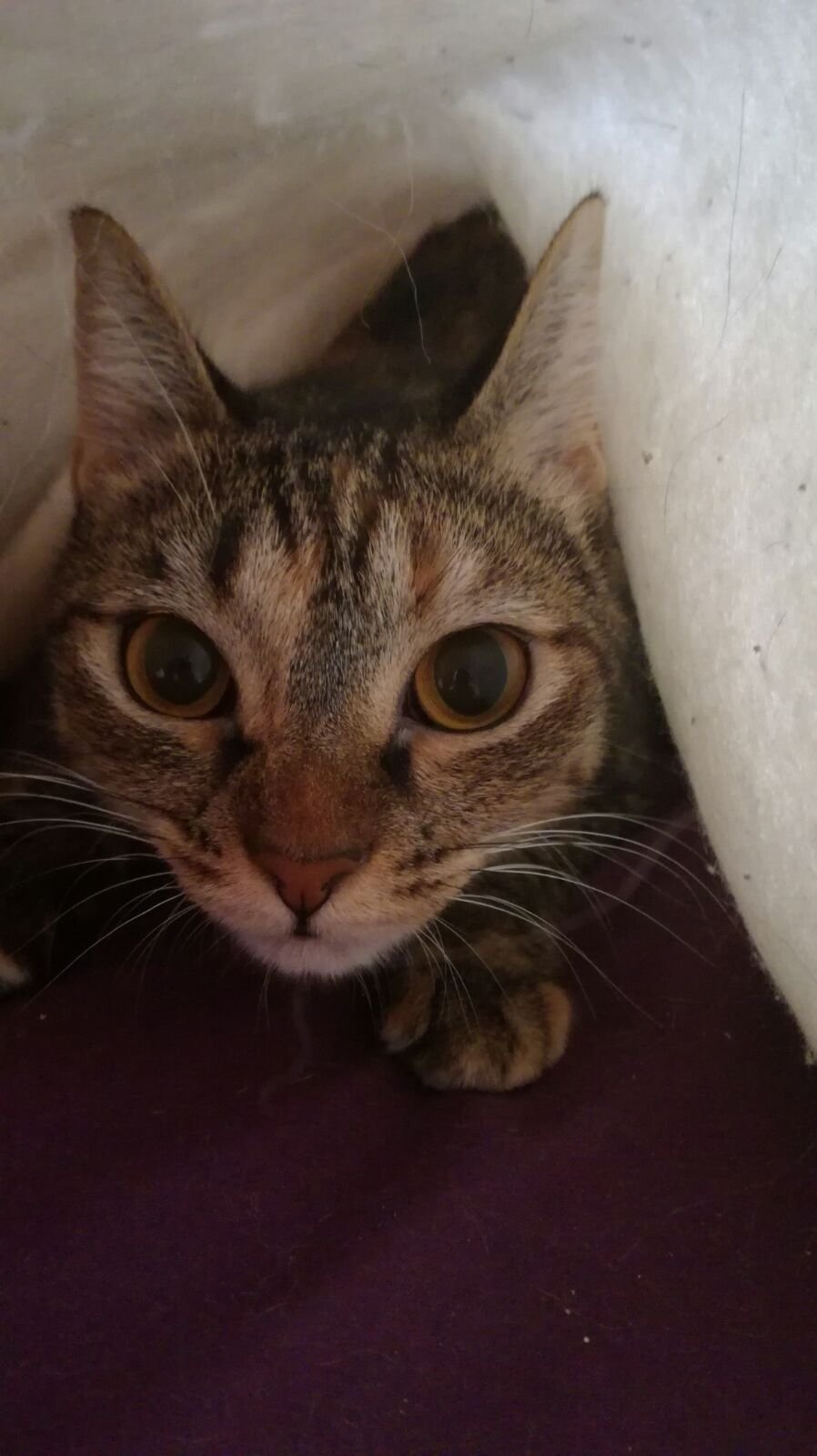Have you ever locked eyes with your cat and wondered what’s really going on behind those mysterious, glimmering pupils? Is it just hunger, boredom, or is there something deeper—something surprisingly human? The idea that cats are distant or aloof is everywhere, but more and more cat lovers are beginning to suspect the opposite. Anyone who has ever had a cat curl up beside them on a tough day knows there’s more to these whiskered companions than meets the eye. Let’s dig into the secrets of feline emotions and ask: are cats much more emotionally complex than we’ve ever imagined?
The Myth of the Aloof Cat

For years, people have claimed that cats are cold or indifferent. This stereotype is everywhere, and it’s easy to see why—cats often seem to come and go as they please, without much fuss. But if you pay close attention, small gestures like a slow blink or gentle nudge paint a different picture. Some experts now argue that cats show affection in subtle ways that are often missed. Their independence doesn’t mean they don’t care; it just means they express their feelings differently. If you’ve ever seen your cat wait by the door for you, you know they’re more than just “aloof.” The myth may just be a misunderstanding of their unique emotional language.
Understanding Feline Body Language

Cats communicate tons of emotions through their bodies. A tail flick, flattened ears, or a gentle head-butt all carry meaning. For example, when a cat’s tail is held high, it’s often a sign of happiness and confidence. Slow blinking is like a kitty kiss, showing trust. Understanding these signals can help us see just how emotionally expressive cats can be. Watching for these signs is like learning a secret language—one that reveals a world of complex feelings. It’s amazing how much a twitch of the whiskers or a shift in posture can say about a cat’s mood.
Attachment and Bonding with Humans

Contrary to popular belief, many cats form strong bonds with their people. Recent studies have shown that cats can be just as attached to their humans as dogs are. They may follow you from room to room, sleep on your pillow, or greet you at the door. This attachment can be deep and meaningful, rooted in trust and affection. Some cats even get anxious when separated from their favorite person. It’s not just about food—cats genuinely crave companionship and connection.
Jealousy and Rivalry Among Cats

If you’ve ever brought a new pet home, you might have noticed your cat acting out of sorts. Cats can show jealousy—hissing, hiding, or becoming clingy when they feel replaced or threatened. They may guard their favorite spot or demand extra attention. This emotional response hints at a more complex social life than we often give them credit for. Cats want to know they matter, and they can feel slighted if they think someone else is getting too much of your love.
Empathy: Do Cats Sense Our Moods?

Many cat owners swear their cats can sense when they’re sad, sick, or stressed. Some cats come close and purr when you’re down, or refuse to leave your side during tough times. While science is still catching up, there’s growing evidence that cats can pick up on human emotions. They may not understand every detail, but they respond to our tone of voice, body language, and even our scent. This empathy suggests a deeper emotional intelligence that goes far beyond what we used to believe.
Fear and Anxiety in Felines

Cats can experience a range of fears, from loud noises to unfamiliar guests. Their reactions—like hiding, hissing, or excessive grooming—are signs of real emotional distress. Some cats even develop long-term anxiety, especially after traumatic events. Understanding and addressing these fears shows us how sensitive and complex cats can be. Providing safe spaces and gentle reassurance can help these furry friends feel secure again.
Playfulness and Joy

Who hasn’t laughed at a cat chasing a toy or leaping after a feather? Cats express joy in playful bursts, often zooming around the house with wild abandon. Play isn’t just about exercise—it’s also an emotional outlet. Kittens and adult cats alike show happiness through pouncing, wrestling, and chasing. These moments of joy are reminders that cats have rich inner lives filled with excitement and fun.
Grief and Loss in Cats

Cats can mourn the loss of a companion, whether it’s another pet or a beloved human. They might search for the missing friend, become withdrawn, or stop eating. This grieving process can last weeks or even months. Observing a cat in mourning reveals just how deeply they can feel. Offering extra comfort and routine can help them heal, but it’s clear that cats are capable of real sadness.
Curiosity and the Drive to Explore

“Curiosity killed the cat” is a saying for a reason—cats are naturally inquisitive. This drive to explore isn’t just about survival; it’s also fueled by emotional needs. Exploring new spaces, sniffing out new scents, and investigating odd sounds all bring excitement. Curiosity seems to be a blend of fear, interest, and joy, showing just how many feelings can be packed into a single whiskered face.
Social Hierarchies and Group Dynamics

In multi-cat households or colonies, cats often establish complex social hierarchies. There are leaders, followers, and sometimes outcasts. These social structures involve alliances, rivalries, and shifting loyalties. Watching cats navigate these relationships reveals a society as nuanced as any group of humans. It’s not just about dominance; it’s about cooperation, negotiation, and sometimes compromise.
Affection and Loving Gestures

Cats show affection in ways that can be easy to miss. A gentle rub against your leg, a purr, or a soft knead on your lap are clear signs of love. Some cats even bring “gifts”—like a favorite toy or, less pleasantly, a caught mouse. These gestures aren’t random; they’re heartfelt ways of saying “I care about you.” The more attention you pay, the more you’ll notice these little love notes sprinkled throughout the day.
Communication Beyond Meows

While cats do meow, especially with humans, their communication toolbox is vast. They use chirps, trills, purrs, and even silent meows to express how they feel. Each sound has a meaning, from greeting to complaint. Over time, cats often develop a unique “language” with their favorite people. This personalized communication shows just how adaptable and emotionally tuned-in they can be.
Territorial Instincts and Emotional Reactions

Cats are famously territorial creatures, and this instinct is deeply emotional. Introducing a new cat or changing the environment can trigger stress, aggression, or withdrawal. These reactions are rooted in a need for safety and security. A cat’s territory is its comfort zone, and any threat to it is taken very seriously. Respecting these boundaries helps maintain emotional balance.
Trust: The Ultimate Feline Gift

When a cat exposes its belly, sleeps in your lap, or follows you around, it’s showing trust—a rare and precious gift. Trust is built slowly, through consistent care and kindness. Once earned, it can last a lifetime. Losing a cat’s trust, however, is easy and regaining it can be tough. This delicate balance reveals a depth of emotional investment that’s easy to underestimate.
Changes in Routine: Stress and Adaptability

Cats love routine. Even small changes—a new feeding time, unfamiliar furniture, or a different person in the house—can cause stress. Some cats adapt quickly, while others take time to adjust. Their reactions range from hiding to acting out. Watching how each cat copes with change reveals unique emotional strengths and vulnerabilities, showing just how individual their personalities can be.
Health and Emotional Well-Being

Emotional health and physical health are closely linked in cats. Stress or sadness can lead to physical symptoms like loss of appetite or over-grooming. On the flip side, a happy, relaxed cat is often healthier overall. Providing mental stimulation, affection, and a stable environment helps keep both body and mind in top shape. It’s a reminder that caring for a cat means nurturing their emotional world, too.
Maternal Instincts and Family Bonds

Mother cats are famously nurturing, fiercely protective, and deeply bonded with their kittens. Their care goes beyond feeding—it includes teaching, grooming, and comforting their young. Even after kittens grow up, some family bonds remain strong. These relationships hint at an emotional capacity for love, loyalty, and teaching that rivals any other species.
Individual Personalities: No Two Cats Alike

Spend enough time with cats, and you’ll realize each one is a world unto themselves. Some are shy, others outgoing; some are cuddly, others independent. Their personalities shape how they interact with people and other animals. This variety is a testament to the complexity of feline emotions—no one-size-fits-all description will ever do them justice.
Learning and Memory: Emotional Connections

Cats have impressive memories, especially when it comes to people and places they love (or fear). They remember routines, favorite spots, and even old friends. Positive memories can lead to strong bonds, while negative experiences may cause lasting wariness. Their ability to learn from experience shows just how emotionally aware and intelligent they really are.
The Healing Power of the Cat-Human Bond

Many people say their cat makes them feel better, whether it’s the calming rumble of a purr or the gentle presence on a lonely night. The emotional connection between cats and humans can be truly healing. Cats pick up on our moods and offer comfort in ways that are sometimes hard to put into words. Their companionship is a powerful reminder of the hidden depths of their emotional lives.
Rethinking the Inner Life of Cats

As we peel back the layers of feline behavior, it’s clear that cats are much more emotionally complex than we once thought. Their feelings run deep—sometimes hidden, sometimes boldly displayed. Understanding and respecting this complexity can lead to stronger bonds and happier lives for both cats and humans. The next time your cat gazes at you with those wise, ancient eyes, you might just wonder: what else is going on in that mysterious mind?

Linnea is a born and bred Swede but spends as much time as possible in Cape Town, South Africa. This is mainly due to Cape Town’s extraordinary scenery, wildlife, and atmosphere (in other words, because Cape Town is heaven on earth.) That being said, Sweden’s majestic forests forever hold a special place in her heart. Linnea spends as much time as she can close to the ocean collecting sea shells or in the park admiring puppies.






